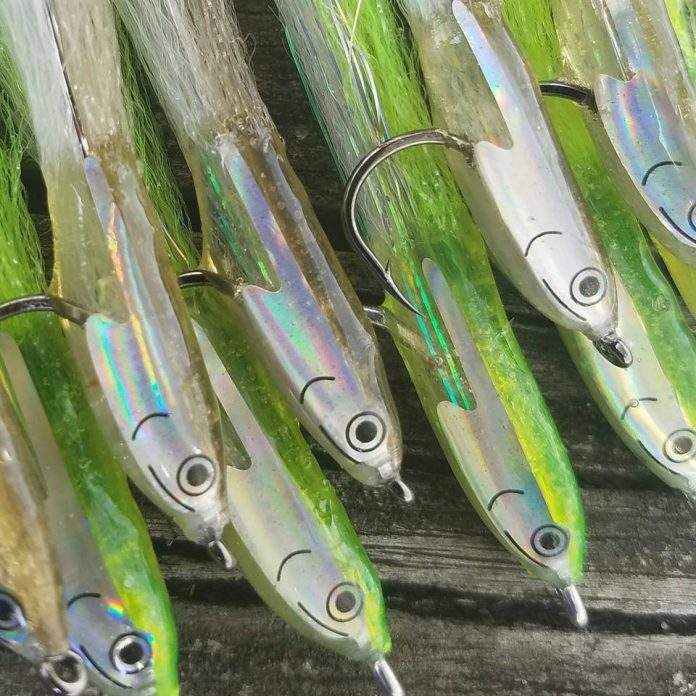Well, the goldenrods are blooming, the love bug hatch is in full swing, and a consistent southeast fetch has been dragging tropical rainfall in off of the Atlantic. These are signs of fall on the Indian River Lagoon coast, and they are all indications that the fall mullet run is in full swing. Silver mullet are a tropical fish species spending their summers growing up in the backwaters of the estuaries, and then migrating south in schools for the winter.
With this said, stormy conditions are expected over the next four days as a weak tropical wave started pushing in from the southeast today. Wet weather is predicted along with elevated seas, so be sure to check the wind and wave predictions before hitting the water.
On the Mosquito Lagoon and north Indian River Lagoon good numbers of slot size redfish have been up very shallow on the flats with some breeder size redfish forming up in their traditional spawning areas in deeper water. As always during the mullet run, concentrate your efforts in areas of mullet schools and use smaller jerk baits or bait for best results when targeting slot redfish up in skinny water.
Along the beach mullet schools are moving south, so concentrate your efforts in areas of mullet schools working along the beach and out through the inlets. Although live bait works well, it is often time consuming to catch and harder to keep alive, so hard and soft lures are my preferred bait choice when casting from the beach or boat. For lures, it’s prudent to choose lures that imitate the primary forage (mullet). So, for soft lures I like the DOA Bait Buster and BFL, and my hard bait selection is the Rapala Skitterwalk or the Subwaker in natural colors. Additionally, key predators like snook and redfish will be working the edge of the surf within 30 feet on the shoreline, so fish parallel to the beach to keep your lures in the feeding zone longer.
Out in the inlet passes breeder redfish will be forming up for their spawn, so look for large fish busting bait and be prepared for some heavy combat. Remember, these fish are bruisers, so make sure you use tackle with plenty of backbone. I use a 7′ medium heavy rod spooled with 20 to 30-pound test braid combined with 30 to 40-pound fluorocarbon leader. Because these fish are spawning, you want to land them and release them quickly. Elevated seas will make the inlet passes traitorous, so use caution and be safe. Along with the big redfish, there will be plenty of big jacks, snook, and sharks in the mix. Also, let not forget our toothy friends the bluefish and Spanish mackerel. Remember when fishing the inlets, safety is paramount. Heavy currents, heavy boat traffic, swells combined with hooked-up fish all make for some sporty fishing, so stay on top of your game by keeping your motor running with someone on watch manning the helm ready at all times.
As always, if you have any questions or need information, please contact me.
Good luck and good fishing,
Captain Tom Van Horn
- January 2021:Tom Van Horn - December 31, 2020
- December, Tom Van Horn - December 1, 2020
- Tom Van Horn:November - October 30, 2020











